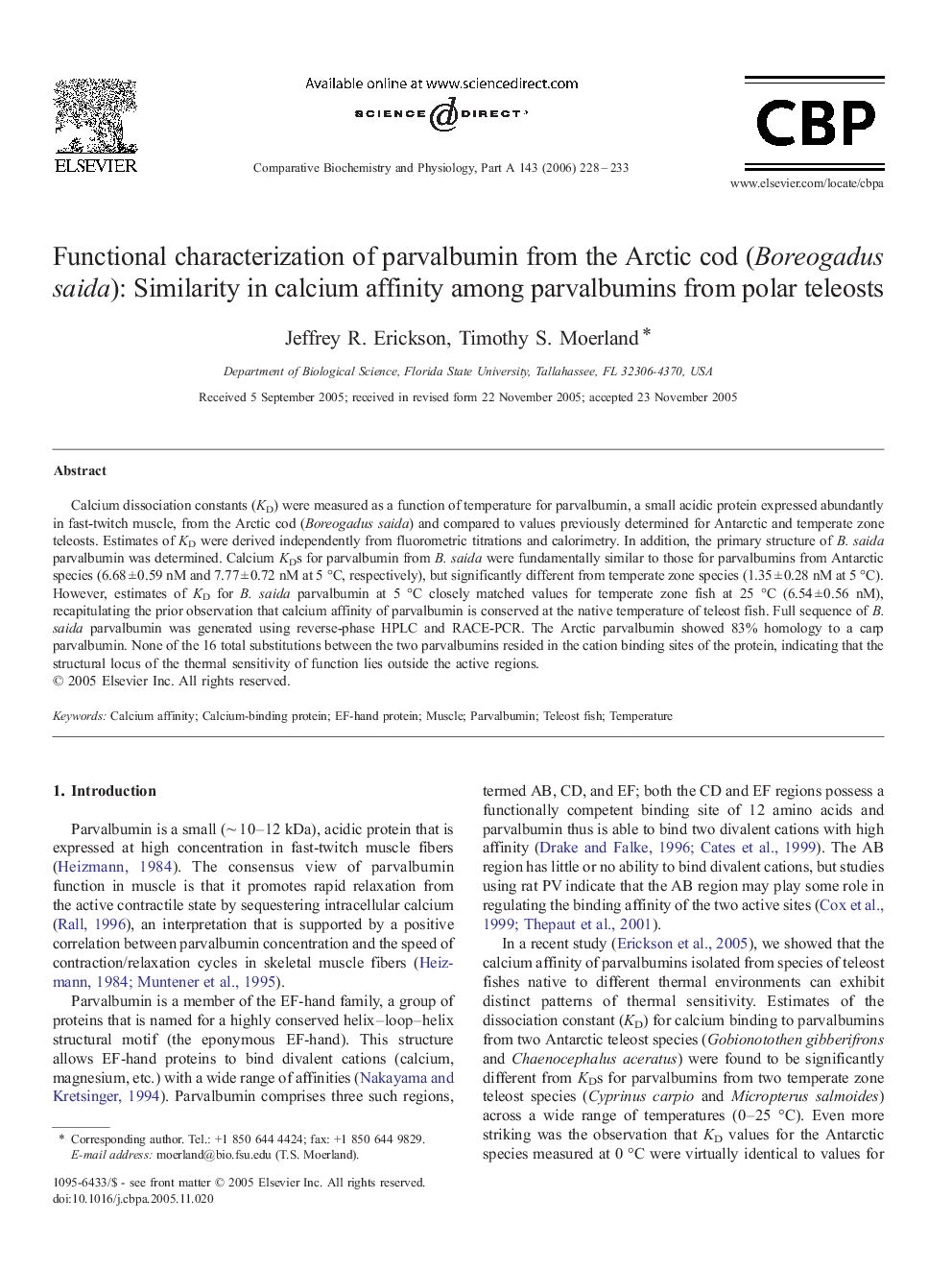| کد مقاله | کد نشریه | سال انتشار | مقاله انگلیسی | نسخه تمام متن |
|---|---|---|---|---|
| 1974051 | 1060335 | 2006 | 6 صفحه PDF | دانلود رایگان |

Calcium dissociation constants (KD) were measured as a function of temperature for parvalbumin, a small acidic protein expressed abundantly in fast-twitch muscle, from the Arctic cod (Boreogadus saida) and compared to values previously determined for Antarctic and temperate zone teleosts. Estimates of KD were derived independently from fluorometric titrations and calorimetry. In addition, the primary structure of B. saida parvalbumin was determined. Calcium KDs for parvalbumin from B. saida were fundamentally similar to those for parvalbumins from Antarctic species (6.68 ± 0.59 nM and 7.77 ± 0.72 nM at 5 °C, respectively), but significantly different from temperate zone species (1.35 ± 0.28 nM at 5 °C). However, estimates of KD for B. saida parvalbumin at 5 °C closely matched values for temperate zone fish at 25 °C (6.54 ± 0.56 nM), recapitulating the prior observation that calcium affinity of parvalbumin is conserved at the native temperature of teleost fish. Full sequence of B. saida parvalbumin was generated using reverse-phase HPLC and RACE-PCR. The Arctic parvalbumin showed 83% homology to a carp parvalbumin. None of the 16 total substitutions between the two parvalbumins resided in the cation binding sites of the protein, indicating that the structural locus of the thermal sensitivity of function lies outside the active regions.
Journal: Comparative Biochemistry and Physiology Part A: Molecular & Integrative Physiology - Volume 143, Issue 2, February 2006, Pages 228–233